第132章 NORTHERN CHILE.CONCLUSION(2)
This pile of strata dips at an angle of about 20 degrees to N.E.by N., close up to the foot of the Cuesta de Los Hornos, a crooked range of mountains formed of intrusive rocks of the same nature with the above described hillocks.Only in one or two places, on this south-eastern side of the range, I noticed a narrow fringe of the upper gypseous strata brushed up and inclined south-eastward from it.On its north-eastern flank, and likewise on a few of the summits, the stratified porphyritic conglomerate is inclined N.E.: so that, if we disregard the very narrow anticlinal fringe of gypseous strata at its S.E.foot, this range forms a second uniclinal axis of elevation.Proceeding in a north-by-east direction to the village of Combarbala, we come to a third escarpment of the porphyritic conglomerate, dipping eastwards, and forming the outer range of the main Cordillera.The lower beds were here more jaspery than usual, and they included some white cherty strata and red sandstones, alternating with purple claystone porphyry.Higher up in the Cordillera there appeared to be a line of andesitic rocks; and beyond them, a fourth escarpment of the porphyritic conglomerate, again dipping eastwards or inwards.The overlying gypseous strata, if they ever existed here, have been entirely removed.
COPPER MINES OF PANUNCILLO.
>From Combarbala to Coquimbo, I traversed the country in a zigzag direction, crossing and recrossing the porphyritic conglomerate and finding in the granitic districts an unusual number of mountain-masses composed of various intrusive, porphyritic rocks, many of them andesitic.One common variety was greenish-black, with large crystals of blackish albite.At Panuncillo a short N.N.W.and S.S.E.ridge, with a nucleus formed of greenstone and of a slate-coloured porphyry including crystals of glassy feldspar, deserves notice, from the very singular nature of the almost vertical strata composing it.These consist chiefly of a finer and coarser granular mixture, not very compact, of white carbonate of lime, of protoxide of iron and of yellowish garnets (ascertained by Professor Miller), each grain being an almost perfect crystal.Some of the varieties consist exclusively of granules of the calcareous spar; and some contain grains of copper ore, and, I believe, of quartz.These strata alternate with a bluish, compact, fusible, feldspathic rock.Much of the above granular mixture has, also, a pseudo-brecciated structure, in which fragments are obscurely arranged in planes parallel to those of the stratification, and are conspicuous on the weathered surfaces.The fragments are angular or rounded, small or large, and consist of bluish or reddish compact feldspathic matter, in which a few acicular crystals of feldspar can sometimes be seen.The fragments often blend at their edges into the surrounding granular mass, and seem due to a kind of concretionary action.
These singular rocks are traversed by many copper veins, and appear to rest conformably on the granular mixture (in parts as fine-grained as a sandstone) of quartz, mica, hornblende, and feldspar; and this on fine-grained, common gneiss; and this on a laminated mass, composed of pinkish ORTHITIC feldspar, including a few specks of hornblende; and lastly, this on granite, which together with andesitic rocks, form the surrounding district.
COQUIMBO: MINING DISTRICT OF ARQUEROS.
At Coquimbo the porphyritic conglomerate formation approaches nearer to the Pacific than in any other part of Chile visited by me, being separated from the coast by a tract only a few miles broad of the usual plutonic rocks, with the addition of a porphyry having a red euritic base.In proceeding to the mines of Arqueros, the strata of porphyritic conglomerate are at first nearly horizontal, an unusual circumstance, and afterwards they dip gently to S.S.E.After having ascended to a considerable height, we come to an undulatory district in which the famous silver mines are situated; my examination was chiefly confined to those of S.Rosa.Most of the rocks in this district are stratified, dipping in various directions, and many of them are of so singular a nature, that at the risk of being tedious I must briefly describe them.The commonest variety is a dull-red, compact, finely brecciated stone, containing much iron and innumerable white crystallised particles of carbonate of lime, and minute extraneous fragments.Another variety is almost equally common near S.Rosa; it has a bright green, scanty basis, including distinct crystals and patches of white carbonate of lime, and grains of red, semi-micaceous oxide of iron; in parts the basis becomes dark green, and assumes an obscure crystalline arrangement, and occasionally in parts it becomes soft and slightly translucent like soapstone.These red and green rocks are often quite distinct, and often pass into each other; the passage being sometimes affected by a fine brecciated structure, particles of the red and green matter being mingled together.Some of the varieties appear gradually to become porphyritic with feldspar; and all of them are easily fusible into pale or dark-coloured beads, strongly attracted by the magnet.I should perhaps have mistaken several of these stratified rocks for submarine lavas, like some of those described at the Puente del Inca, had I not examined, a few leagues eastward of this point, a fine series of analogous but less metamorphosed, sedimentary beds belonging to the gypseous formation, and probably derived from a volcanic source.